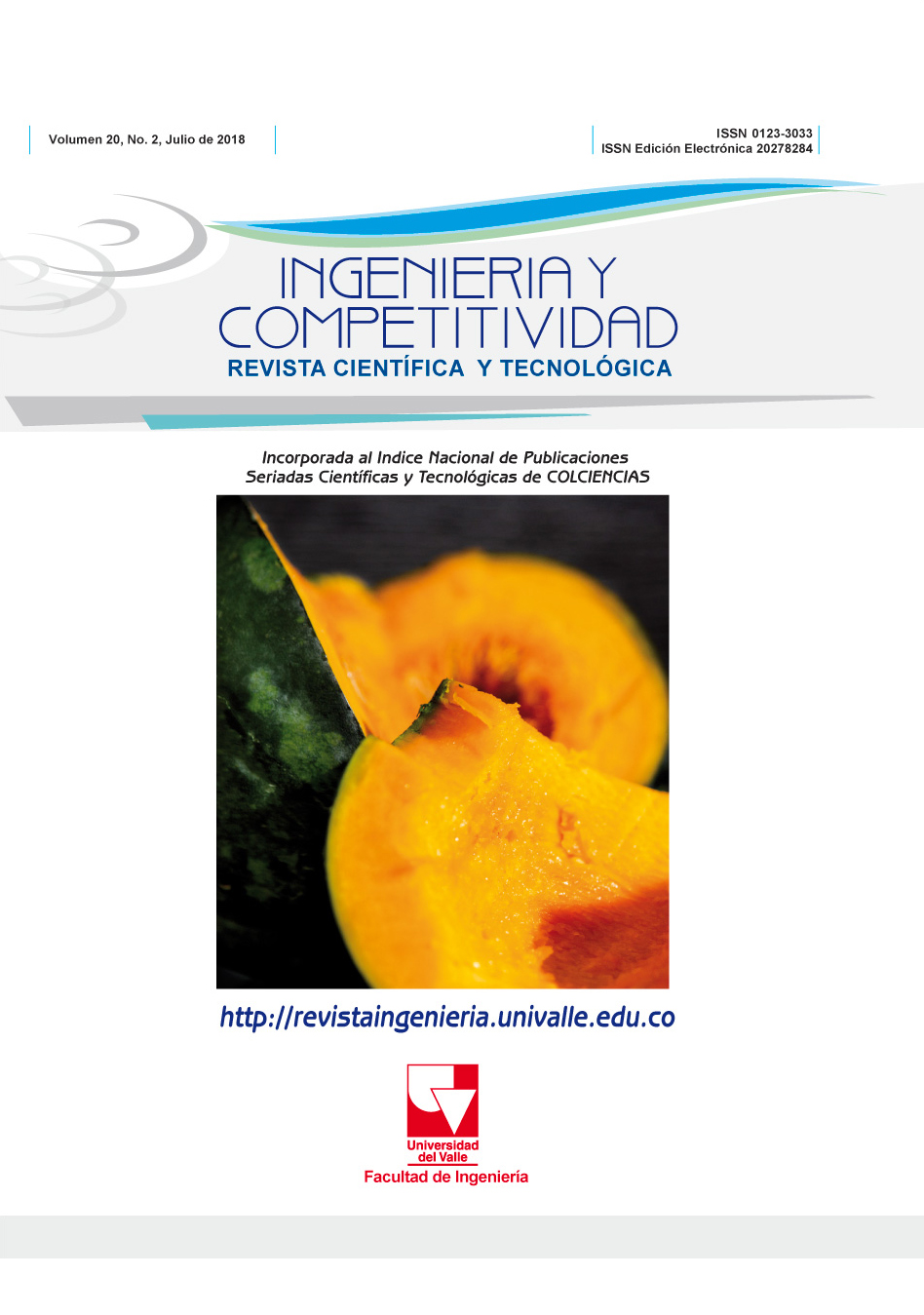Efecto de las condiciones del hidrosecado sobre el encogimiento de trozos de zapallo (Cucurbita maxima)
Contenido principal del artículo
El método para secar apropiadamente frutas y vegetales debe incrementar la calidad del producto terminado además de ser económicamente viable, por tal motivo, se han aplicado y desarrollado varias tecnologías que incluyen pre-tratamientos y mejoras a la técnica de secado misma. Mediante la metodología para muestras gruesas llamada “hidrosecado conductivo” basada en la técnica de Ventana de Refractancia (RWTM), se deshidrataron trozos rectangulares de zapallo (1.2 x 1.1 x 5.9 cm3) usando un baño termostático con agua a una temperatura de 90±2°C, durante 3 h. Se realizó un diseño factorial 22 para analizar el efecto de la convección y la conducción sobre el encogimiento de las muestras. Los factores evaluados fueron el tipo de convección con dos niveles: convección natural (NC) y convección forzada (FC); y el tipo de lámina empleada para el secado con dos niveles: MylarTM(MY) y MylarTM con papel aluminio (MY/AL). Se evaluó el factor de cambio de volumen (V/V0) a partir de las dimensiones primarias (ancho, alto, y largo) de las muestras durante el secado. El menor y el mayor encogimiento de acuerdo al factor de cambio de volumen se observó en los tratamientos de convección natural NC-MY/AL y NC-MY, respectivamente. Se encontró una relación exponencial entre el cambio de volumen y la tasa de secado. El ANOVA indicó que el tipo de convección y la interacción convección-lámina fueron estadísticamente significantes en los diferentes análisis
- Secado
Descargas
Los autores que publican en esta revista están de acuerdo con los siguientes términos:
Los autores ceden los derechos patrimoniales a la revista y a la Universidad del Valle sobre los manuscritos aceptados, pero podrán hacer los reusos que consideren pertinentes por motivos profesionales, educativos, académicos o científicos, de acuerdo con los términos de la licencia que otorga la revista a todos sus artículos.
Los artículos serán publicados bajo la licencia Creative Commons 4.0 BY-NC-SA (de atribución, no comercial, sin obras derivadas).





